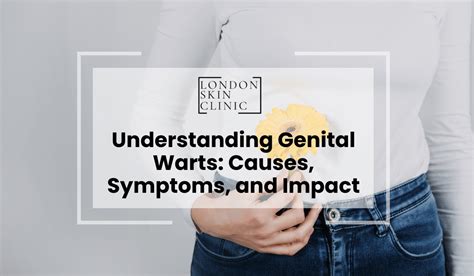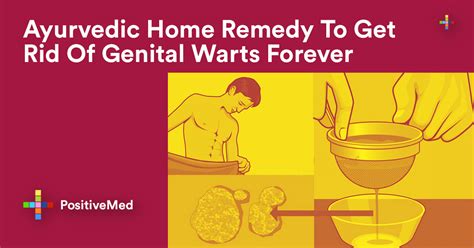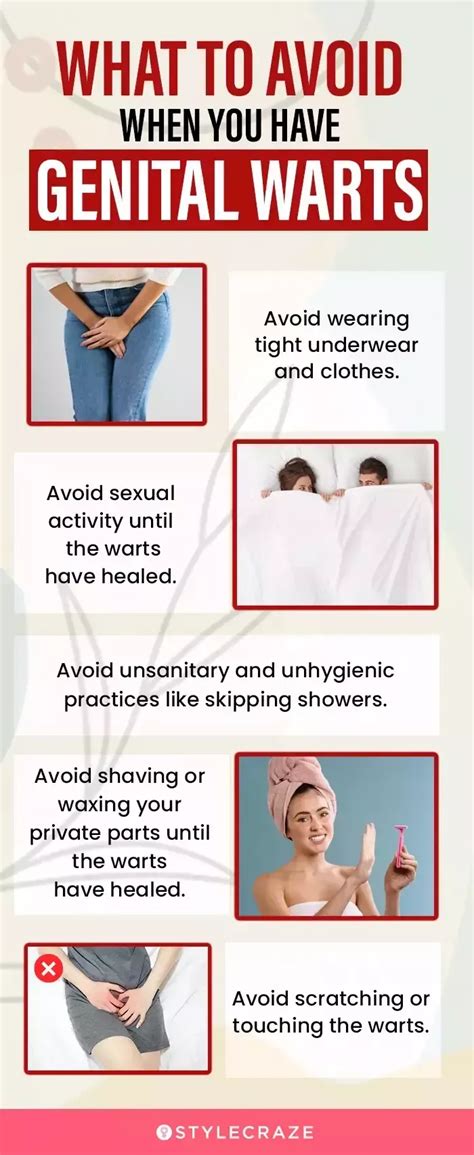Intro
Effectively remove genital warts with proven treatments, including cryotherapy, laser removal, and natural remedies, to alleviate symptoms and prevent transmission, promoting genital health and wellness.
Genital warts are a common sexually transmitted infection (STI) caused by the human papillomavirus (HPV). They can appear on the vulva, vagina, cervix, penis, scrotum, or anus, and can be uncomfortable, painful, and embarrassing. Removing genital warts effectively is crucial to alleviate symptoms, prevent the spread of the infection, and reduce the risk of complications. In this article, we will discuss the importance of removing genital warts, the available treatment options, and provide guidance on how to choose the best approach.
Genital warts can cause significant distress and discomfort, affecting a person's quality of life. If left untreated, they can lead to further complications, such as increased risk of cervical cancer, anal cancer, and other health problems. Moreover, genital warts can be transmitted to partners during sexual activity, making it essential to seek treatment promptly. The good news is that there are various effective treatment options available to remove genital warts, and we will explore these in more detail below.
Removing genital warts effectively requires a comprehensive approach that takes into account the individual's overall health, the severity of the infection, and their personal preferences. It is essential to consult a healthcare professional for proper diagnosis and treatment. They will assess the warts, discuss the available treatment options, and recommend the best course of action. In some cases, genital warts may resolve on their own, but this can take several months or even years. Treatment can help speed up the process, reduce symptoms, and prevent complications.
Understanding Genital Warts

Types of Genital Warts
There are several types of genital warts, including: * Condyloma acuminatum: This is the most common type of genital wart, which appears as a small, pink or flesh-colored growth. * Condyloma latum: This type of genital wart is flat and appears as a small, white or grayish patch. * Bowenoid papulosis: This is a rare type of genital wart that appears as a small, pink or red growth.Treatment Options for Genital Warts

Benefits and Risks of Each Treatment Option
Each treatment option has its benefits and risks. For example: * Topical treatments are often less invasive and have fewer side effects, but they may not be as effective for larger warts. * Cryotherapy can be painful and may require multiple sessions, but it is often effective for smaller warts. * Surgical removal can be more invasive and may require a longer recovery time, but it is often effective for larger warts.Home Remedies for Genital Warts

Precautions and Warnings
It is essential to note that home remedies may not be effective for everyone, and they may not be suitable for people with certain health conditions. It is crucial to consult a healthcare professional before trying any home remedies, especially if you are pregnant, breastfeeding, or have a weakened immune system.Preventing Genital Warts

Importance of Regular Check-Ups
Regular check-ups with a healthcare professional are essential to monitor for any changes in the genital area and to detect any potential health problems early. This is especially important for people who are sexually active, as they may be at a higher risk of contracting genital warts.Lifestyle Changes to Manage Genital Warts

Importance of Seeking Support
Genital warts can be emotionally challenging, and seeking support from friends, family, or a therapist can be helpful. It is essential to remember that genital warts are a common health problem, and seeking treatment is the first step towards recovery.What are the symptoms of genital warts?
+Genital warts can cause symptoms such as itching, burning, and discomfort in the genital area. They can also cause pain during sex or bleeding after sex.
How are genital warts diagnosed?
+Genital warts are typically diagnosed through a physical examination and a visual inspection of the genital area. A healthcare professional may also perform a biopsy or a Pap test to confirm the diagnosis.
Can genital warts be cured?
+While there is no cure for genital warts, treatment can help remove the warts and reduce the risk of complications. In some cases, genital warts may resolve on their own, but this can take several months or even years.
How can I prevent genital warts?
+Preventing genital warts involves practicing safe sex, getting vaccinated, and avoiding skin-to-skin contact with someone who has genital warts. Regular check-ups with a healthcare professional can also help detect any potential health problems early.
What are the risks of untreated genital warts?
+Untreated genital warts can lead to complications such as increased risk of cervical cancer, anal cancer, and other health problems. They can also cause significant distress and discomfort, affecting a person's quality of life.
In conclusion, removing genital warts effectively requires a comprehensive approach that takes into account the individual's overall health, the severity of the infection, and their personal preferences. It is essential to consult a healthcare professional for proper diagnosis and treatment. By understanding the causes, symptoms, and treatment options for genital warts, individuals can take the first step towards recovery and reduce the risk of complications. We encourage readers to share their experiences and ask questions in the comments section below. If you found this article helpful, please share it with others who may be struggling with genital warts. Remember, seeking treatment is the first step towards recovery, and there is hope for a healthy and happy life.
